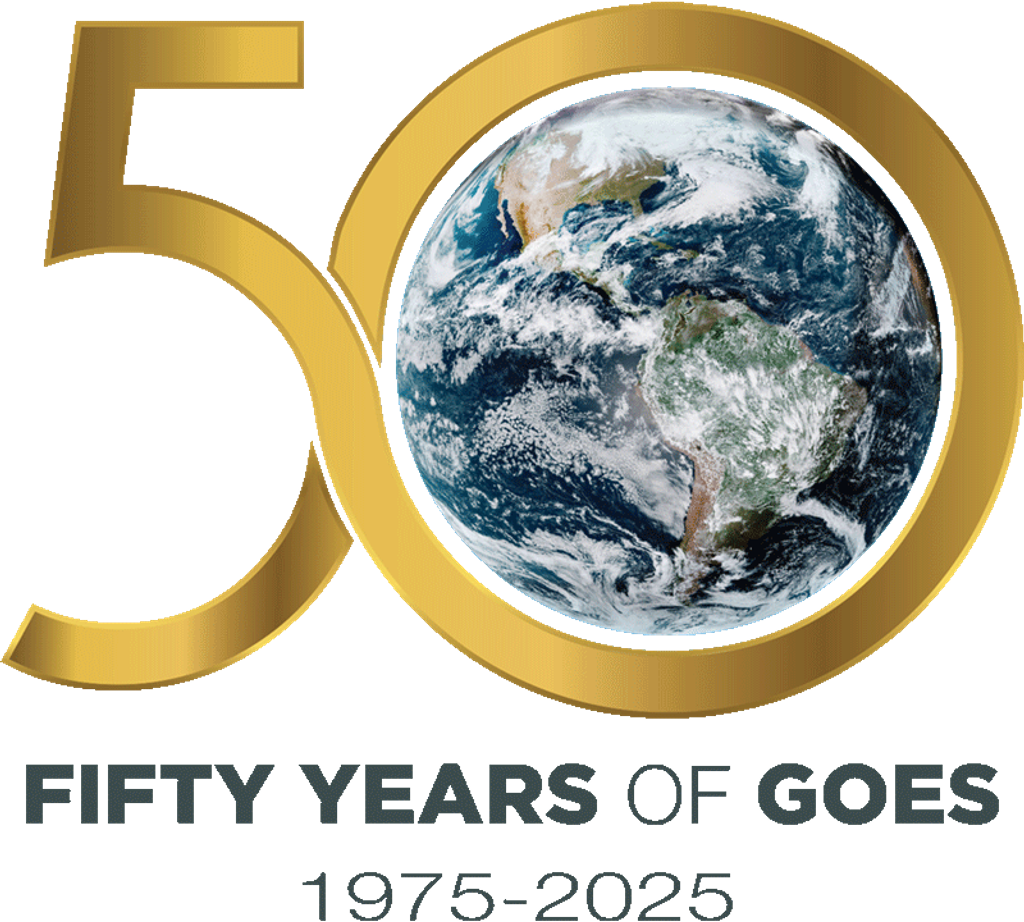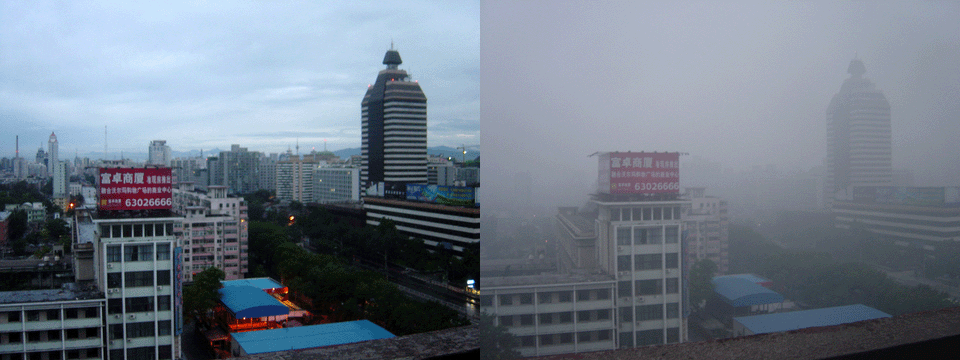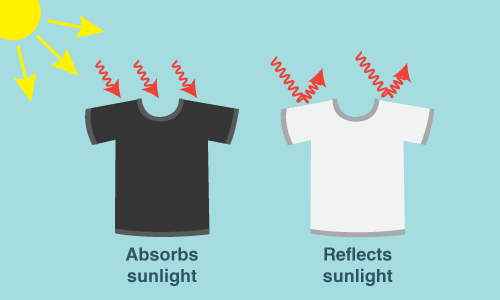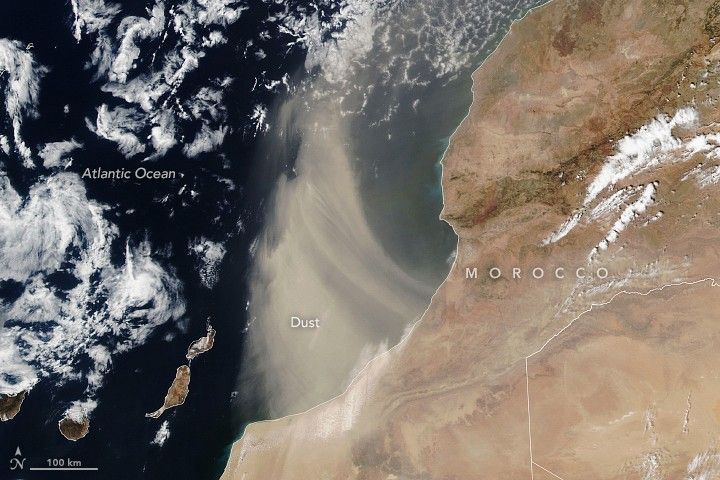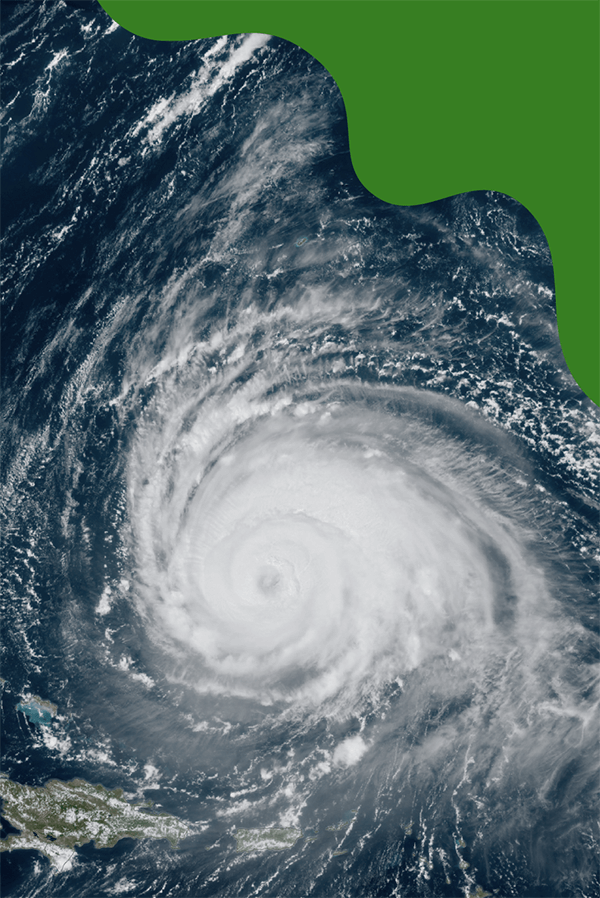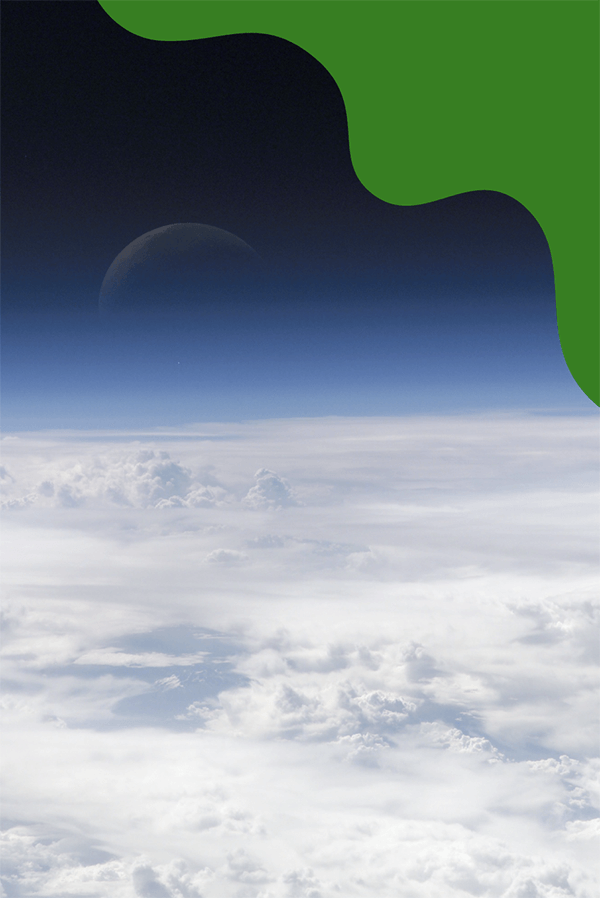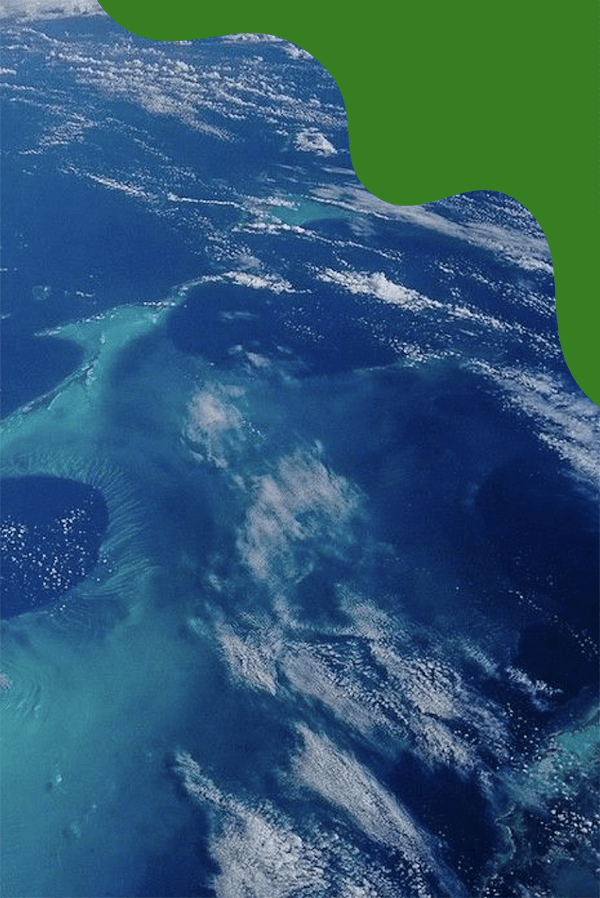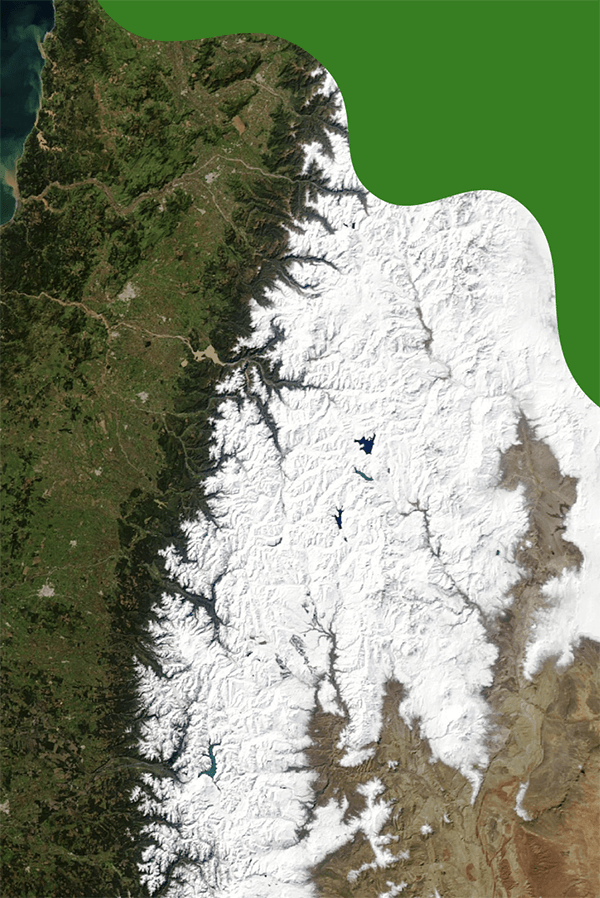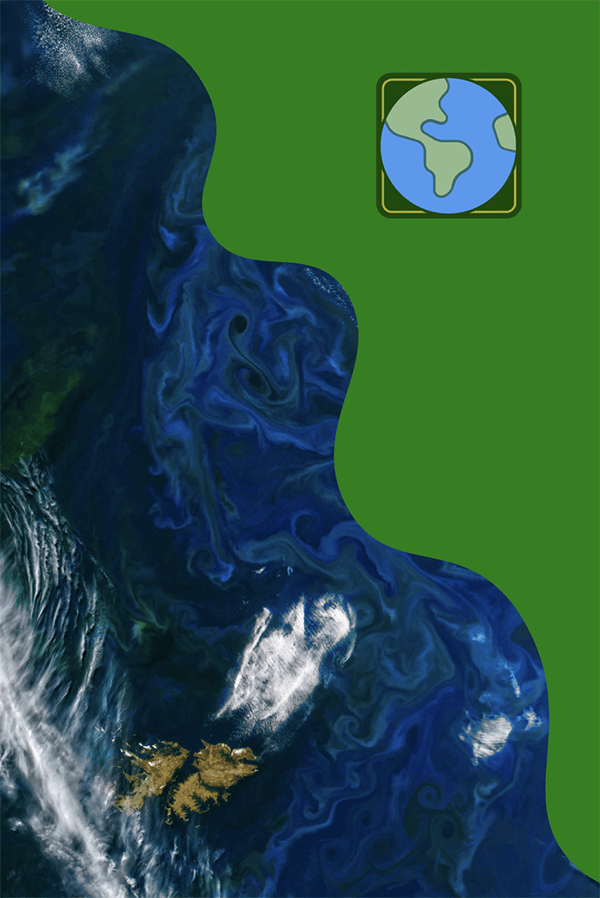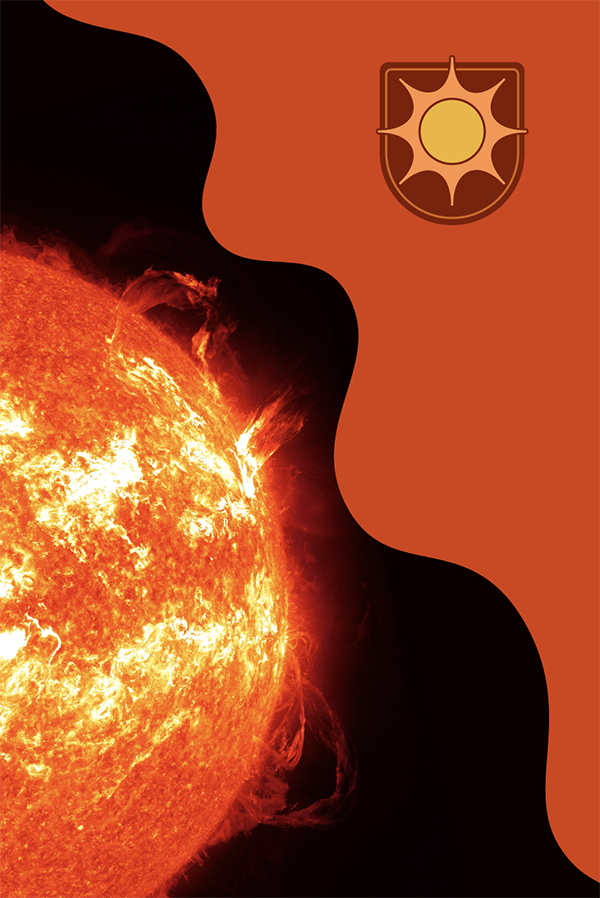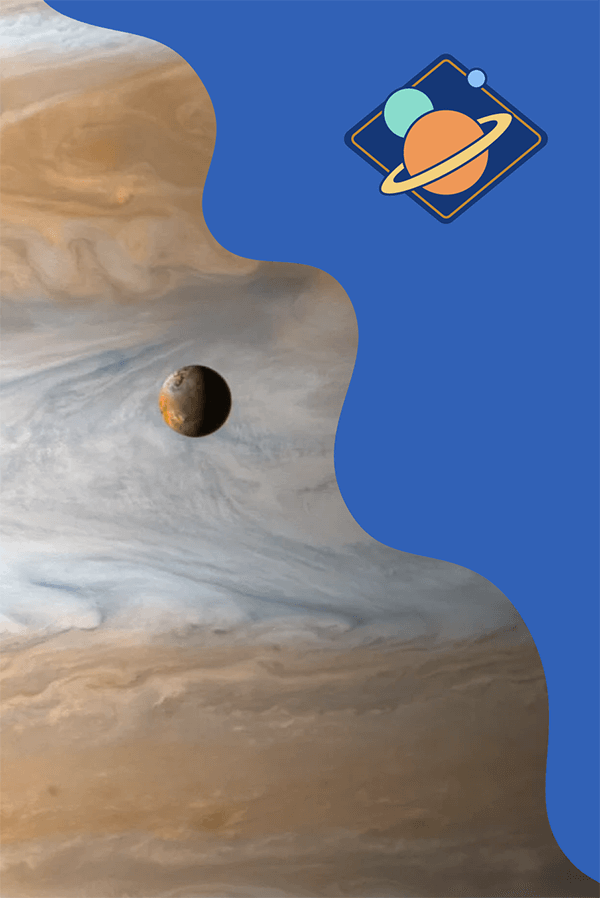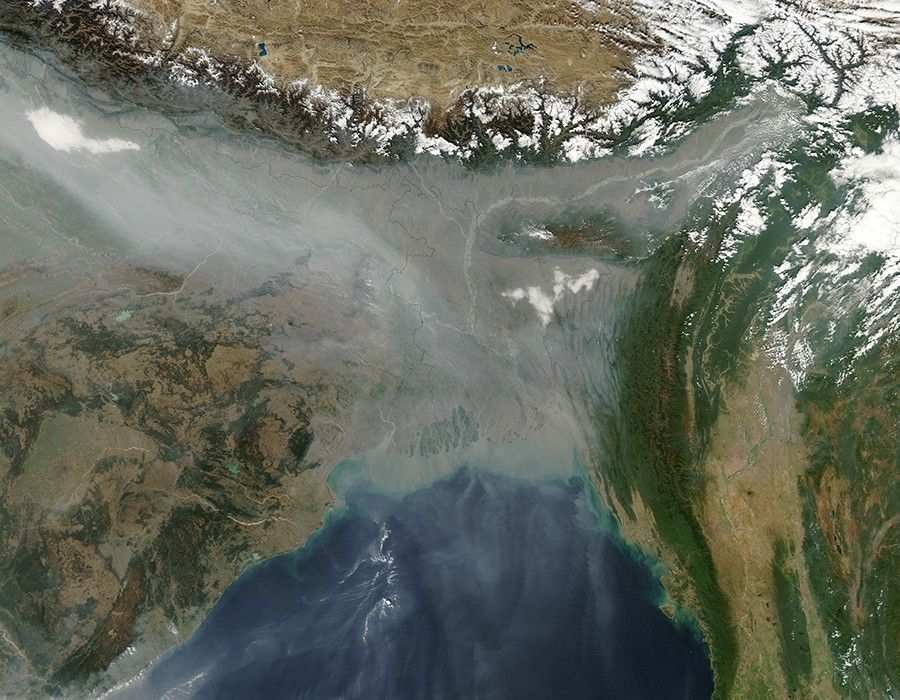


What Causes Air Pollution?
Air pollution is caused by tiny solid and liquid particles floating in the air, and by certain gases. These particles and gases can come from many sources. These include exhaust from cars and trucks, pollution from factories, and smoke from wildfires. It also includes ash from volcanic eruptions, dust from deserts, sea spray, pollen, and mold spores. Air pollution can be unhealthy for us depending on the amount and type.
Learn about what air quality is, how it is measured, and why it’s so important, in this 60-second video.
A measurement known as air quality is used to tell us how clean the air is outside. Good air quality means that the air does not have a lot of pollution. Sometimes though, the air quality becomes unhealthy because of air pollution.
What are aerosols?
Any tiny particle that gets picked up by the wind or gets formed from chemical reactions in the air can be an aerosol. Many aerosols enter the atmosphere when we burn things like coal, oil, and wood. Other particles form when chemicals — like the exhaust from our cars — react in the air with sunlight.
Aerosols can come from other places, too, such as ash from an erupting volcano, or sea salt that gets picked up when the wind blows over the ocean. Dust, pollen from plants, and mold spores are also examples of aerosols.
What else causes air pollution?
Certain gases in the atmosphere can also cause air pollution. For example, in cities, a gas called ozone is a major cause of air pollution.
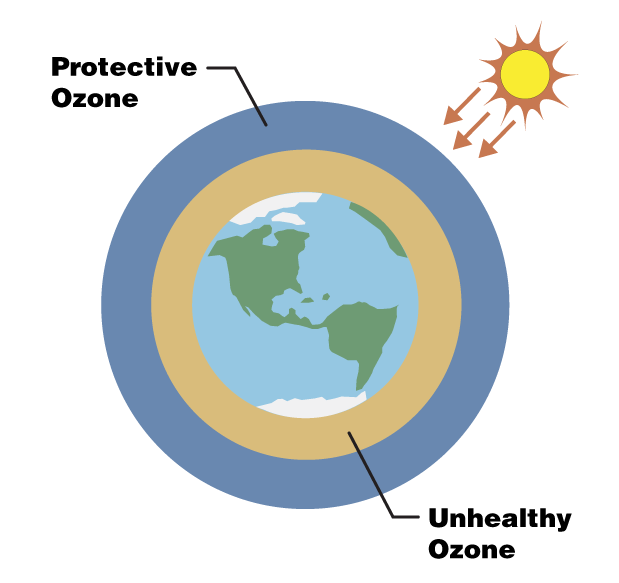
Ozone that occurs high up in Earth’s atmosphere is helpful. It blocks out most of the harmful ultraviolet, or UV, radiation from the Sun. Without this layer of protection, plants, animals, and even humans, wouldn’t be able to survive.
Ozone can also form near Earth’s surface. This happens when sunlight reacts with certain chemicals, including those that come from burning gas in cars and factories. This kind of ozone can be unhealthy for us to breathe. When particles in the air combine with ozone, they can create smog. Smog is a type of air pollution that looks like smoky fog and makes it difficult to see and breathe.
How does air pollution affect our health?
Breathing polluted air can be unhealthy. Our lungs need oxygen to breathe. When the air is too polluted, it can make it hard to breathe. This often affects the lungs and heart as the body is getting less oxygen, which can make us sick. That’s why it’s important for us to monitor air quality.
How does air pollution impact Earth?
Aerosols can impact how sunlight interacts with Earth. For example, some aerosols reflect sunlight while others absorb sunlight. It depends on the color of the particle.
Dark surfaces — whether it’s a black t-shirt or a dark particle in the atmosphere — absorb more sunlight. That causes them to heat up. Lighter-colored surfaces reflect more sunlight. That causes them to heat up less than darker surfaces.
Think about some of your t-shirts. A white t-shirt reflects more sunlight on a hot day, making you feel cooler than if you wore a black t-shirt. In the same way, light-colored aerosols reflect more sunlight. This can make Earth’s temperature slightly cooler. Dark-colored aerosols absorb more sunlight, which can make Earth’s temperature slightly warmer.
Aerosols also affect Earth’s weather. Clouds need moisture in the air to form, but they also need aerosols. As warm, moist air rises from the surface, it cools and condenses, or turns from a gas to a liquid. To grow big enough to form a droplet, the water vapor often needs something to condense on for a boost. That’s where aerosols, like on a particle of sea salt or dust in the air, play a role.
However, if there are too many particles, the droplets can be too spread out to form a cloud. For example, windstorms in the Sahara Desert carry tons of dust from Africa into the Atlantic Ocean every year. This dust and warm, dry air can actually make it harder for a hurricane to form.
How is NASA monitoring air quality?
NASA keeps an eye on air quality with scientific instruments on planes and satellites. The Aqua, Terra, and Suomi NPP satellites have been providing daily data to air quality forecasters for decades.
The TEMPO instrument, or Tropospheric Emissions: Monitoring of Pollution, measures air quality above North America from space every hour. NASA’s PACE, or Plankton, Aerosol, Cloud, ocean Ecosystem, satellite is measuring aerosols all around the world every day. These help scientists learn more about how air quality is changing over time.
NASA has several missions where they test air quality from airplanes, too. These flying laboratories study the air in much more detail over smaller areas, like a city. They also help check that the measurements from satellites are correct.















